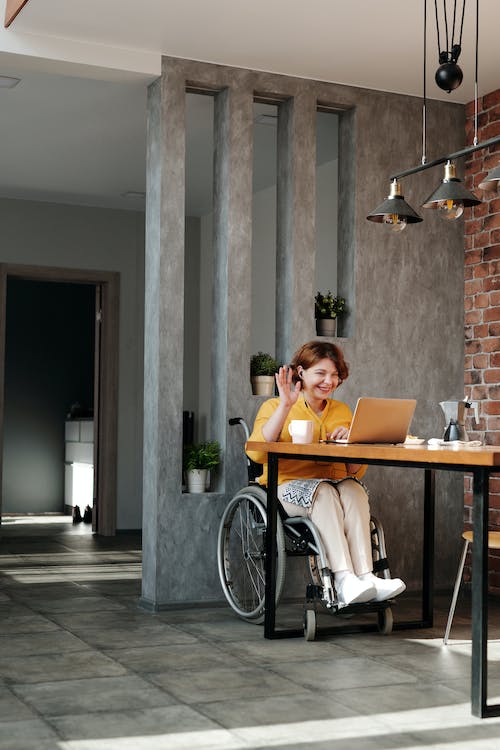Restaurant owners should prioritize making their establishments more comfortable for their customers and improving their service. When designing your restaurant, always keep in mind what you can do to improve accessibility.
Handicapped customers and those who dine with them will appreciate your attention to detail in ensuring a pleasant and comfortable customer dining experience for those with disabilities.
Did you know that over 57 million Americans have mobility, sensory, neurological, intellectual, or other disabilities? Also, this diverse group is a growing market for businesses as well as a useful resource of talent and support for government programs and activities.
Americans with disabilities now have a spending power of about $220 billion. Wounded veterans, an aging baby boomer generation, and other factors are all contributing to an increase in the number of people with disabilities. These people, as well as their family members, friends, and associates, are the people you want to include as customers, participants, volunteers, and supporters in your business or organization.
The Americans with Disabilities Act, signed into law in January 1992, prohibits the exclusion of handicapped customers from participating in everyday activities such as dining out or shopping. As a result, businesses must not only make appropriate accommodations to serve handicapped customers as required by law, as well as provide generally good and fair customer service business practices.
In addition, respect people with disabilities as you would like to be treated. Treat them like other adults, and address them in the same way. Look at and speak directly to the disabled person if they are accompanied by another person. If necessary, inquire about the person’s preferred mode of communication, as well as any communication aids or devices. Do not assume that a disabled person requires assistance. Inquire if the person requires assistance, and then explain how you can assist.
Tips for dealing with Handicapped Customers
1. “Widen the Aisles”
For wheelchair access, the ADA requires 30 inches of clearance on both sides of an aisle. Others with mobility disabilities, such as those who use walkers or canes, will appreciate the wider aisles.
Other guests will not be bumped into and disturbed by wider aisles. In addition, disabled diners will not need to ask other diners to move their chairs to allow them to pass.
2. “Assist customers who have physical disabilities”
First, Install automatic doors. Ensure that the restrooms are easy to locate. Make sure there is someone on staff who can assist someone with a physical disability. Stand in front of a wheelchair or crutches-wielding customer at eye level so they don’t have to strain their neck to communicate with you. Lastly, meeting with a wheelchair-using customer, choose a location that allows customers to enter and move around freely.
3. “Assist customers with hearing impairments”
Provide queuing systems that are not reliant on the ability of customers to hear. Make sure there is no shadow on your face when speaking to help lip-readers. Install and test induction loop systems regularly as well. The restaurant can also provide captions for videos as well as audio transcriptions. Make sure that any audio announcements and communications are documented. In addition, only allow one person at a time to speak.
When working with an interpreter, speak directly to the Deaf person instead of the interpreter
Stand next to the interpreter so that the Deaf person can see both of you.
4. “Assist customers who are visually impaired or blind”
When speaking to someone, turn to face them. Ascertain that it is bright enough for them to see you. Provide queuing systems that do not rely on customers’ ability to see. If necessary, be prepared to provide information in large print, electronic format, or Braille.
5. “Assist Deafblind customers”
From the front, approach the deafblind person. If they do not respond, gently place your hand on their shoulder or hand and wait for them to respond. Furthermore, Maintain the person’s proximity to your body so they can detect direction changes. When approaching steps, take a brief pause before beginning to climb. Raise or lower your arm to indicate a forward or backward step. Pass your guiding arm behind your back when guiding someone through a tight space, and they will fall in single file behind you. Place their hand on the back of the chair when guiding them to a chair; some may find the chair on their own, while others may prefer you to guide them further.
6. “Help customers with speech disabilities”
Request that the person assists you in communicating with her or him Inquire about how to use a communication device, such as a manual or an electronic communication board if the person uses one. If necessary, allow for extra time. Pay close attention as well. Do not speak on the person’s behalf. If necessary, ask short questions that can be answered with a simple nod or shake of the head. And, if necessary, have the customer repeat what they have said. Furthermore, repeat what you have just heard and wait for the other person to respond. Your comprehension will be aided by the response. You can also provide customers with alternative communication methods like text messages and letters.
Your employees should receive disability awareness training and learn how to assist people with disabilities. Furthermore, assist your employees in understanding various types of disabilities and how they may affect specific restaurant tasks. They must understand how they can assist. For example, if a person with a vision impairment requires someone to read the menu to them. Servers should remain near the table to assist with any additional requests. Always be sensitive to their needs and make sure to help them in any way that you can.
In addition, the disabilities of some people can make servers who are unfamiliar with the disabled uncomfortable. People who are unaware of the disability may judge motor tics, neuromuscular disorders, cognitive disabilities, and other disabilities harshly. Make sure your staff receives sensitivity training and can identify and provide adequate service to all guests despite an uncommon disability. Always be sensitive to their needs and make sure to help them in any way that you can. Read these equally important tips in serving dementia and Alzheimer’s sufferers.

